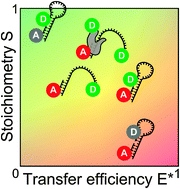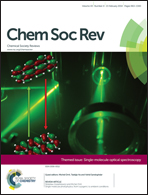Alternating-laser excitation: single-molecule FRET and beyond
Abstract
The alternating-laser excitation (ALEX) scheme continues to expand the possibilities of fluorescence-based assays to study biological entities and interactions. Especially the combination of ALEX and single-molecule Förster Resonance Energy Transfer (smFRET) has been very successful as ALEX enables the sorting of fluorescently labelled species based on the number and type of fluorophores present. ALEX also provides a convenient way of accessing the correction factors necessary for determining accurate molecular distances. Here, we provide a comprehensive overview of the concept and current applications of ALEX and we explicitly discuss how to obtain fully corrected distance information across the entire FRET range. We also present new ideas for applications of ALEX which will push the limits of smFRET-based experiments in terms of temporal and spatial resolution for the study of complex biological systems.

- This article is part of the themed collection: Single-molecule optical spectroscopy

 Please wait while we load your content...
Please wait while we load your content...